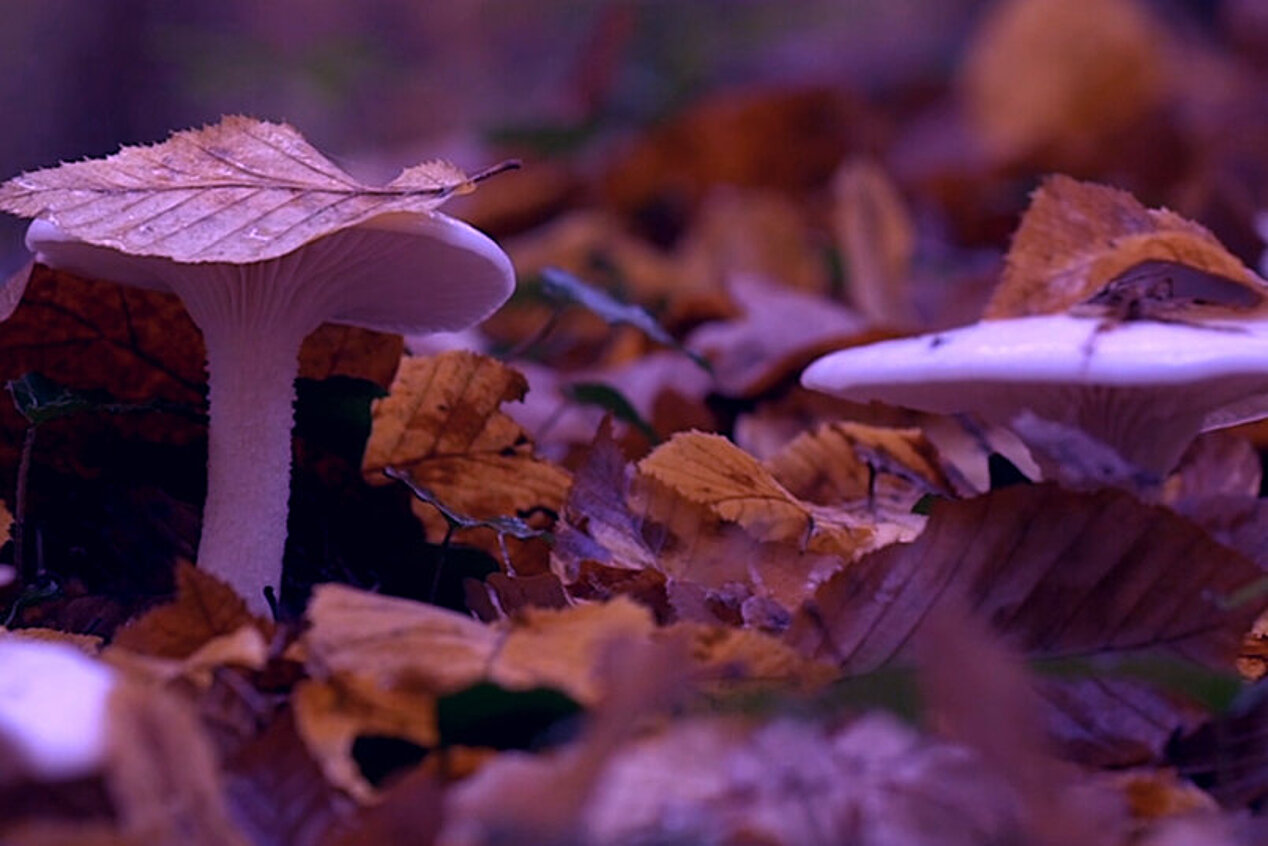Anne Duk Hee Jordan: 'Intimacy of Strangers'
Montreal Museum of Fine Arts
The video installation 'Intimacy of Strangers / Intimité de l'inconnu' takes us to a hybrid terrestrial-aquatic future world in which amphibians, insects, bacteria, fungi, observing chairs, and kinetic objects live side by side. The gallery's walls, covered in an enveloping oceanic blue-green colour, form the background for the adventures of a tiny crab concealing itself in a marine landscape and microscopic spores taking flight and rising through layers of dead leaves. We are witness to scenes of complex cohabitation among different species – scenes in which living together also sometimes means dying together. Jordan weaves these sensual symbiotic or reciprocal relations into a narrative by exploring the idea of a lasting partnership and commitment among different entities. She imagines a world in which all creatures, including humans, are symbionts. Through the speculative perspective of science fiction and the realism of a documentary approach, 'Intimacy of Strangers / Intimité de l'inconnu' addresses the diversity and fluidity of existence through community and inter-species equity. By debunking established notions of nature, culture, and technology, Jordan envisages possible paths for a living-together, a 'becoming-with', on a damaged planet.
Sandra Mujinga in 'Worldmaking Tentacles'
Fonderie Darling
With the sculptural bodies of work 'Nocturnal Kinship' and the video installation 'Disruptive Pattern', Mujinga shapes a tactile universe inhabited by zoomorphic creatures. She melds textures, combining the malleability of skin and textiles with jellyfish-like transparent images to form entities that are midway between human and animal. Hidden under dark, hooded cloaks, the towering figures in Nocturnal Kinship sport extensions reminiscent of an octopus's arms or an elephant's trunk. Conversely, the translucent silhouettes moving on screens in the Disruptive Pattern videos defy the visible, erasing themselves through contact with light like the glass squid. These works refer to the survival strategies developed by certain animals, including octopi and elephants, respectively known for their homochromia – a type of camouflage that imitates the colours of the environment – and their nocturnal behaviours that enable them to evade poaching. The sculptures create tension between bodies and vision by evoking the notion of invisibility as a mode of survival and a conceptual lever for marginalized people. Just as the hoodie has come to be a newsworthy symbol of racial profiling, the costumes, skins, and surfaces here become symbols of protest against violence and discrimination, complexifying the acts of self-camouflage and melting into the landscape. In 'Nocturnal Kinship' and 'Disruptive Pattern', Mujinga brings afrofuturism and posthumanism together in a critical negotiation of the politics of visibility, exposing the alienation and agency that can flow from it.
Susanne M. Winterling in 'Wet Futures'
VOX, centre de l’image contemporaine
In the installation 'planetary opera in three acts', divided by the currents, Winterling immerses us in a hypnotic world featuring swirls of strange, glowing creatures. Gently engulfed in an underwater soundtrack – the sounds of turtle shells hatching, crab claws rubbing together, and other oceanic noises—an ancient form of microalgae called dinoflagellates meander in and out of frame like luminescent spindles. Brushed by a fish or caressed by a wave, these tiny organisms emit light through a chemical reaction called bioluminescence. Almost invisible to the naked eye, they are a vital source of food for many other species, and their presence is a sign of the health of a marine ecosystem. A sudden algal bloom at the surface is an indication that the water is seriously out of biological balance. The opaque shield formed by aquatic plants is not arbitrary or damaging contamination, but the sign of a complex and poetic interspecies alliance from which Winterling suggests that we draw other methodologies. At once a reversal of scale and a fallback solution to anthropocentric logic, 'planetary opera in three acts', divided by the currents draws our attention to the agency of nature and how digital technologies borrow from it. Dinoflagellates, like touchscreens activated with the press of a finger, respond to touch. Through one of the earliest forms of life on Earth, Winterling invites science and imagination, natural and synthetic, to dance together by delving into their encounters in a nonbinary perspective.




